
Databases and websites managed by Health and Environmental Risk Division
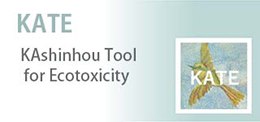
KAshinhou Tool for Ecotoxicity (KATE)
Prediction tool of a chemical’s aquatic toxicity to fish, daphnid, and algae
KATE is a web application tool that predicts ecotoxicity values to aquatic organisms (fish, water flea (Daphnia magna) and algae) according to "OECD Test Guidelines for Chemicals." The tool is based on quantitative structure-activity relationship (QSAR) models and predicts both acute and chronic ecotoxicity values. https://kate.nies.go.jp/index-e.html
https://kate.nies.go.jp/index-e.html
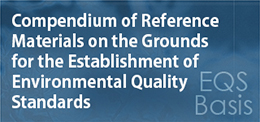
Compendium of Reference Materials on the Basis for Establishment of Environmental Quality Standards in Japan
What are the bases for establishing environmental quality standards in Japan?
The environmental quality standards (EQSs) for air, water, soil, and noise are established and revised by the Ministry of the Environment, Government of Japan. This website compiles references regarding the establishment and revision of EQSs and related items such as guideline values. The website provides English translations for the overview sections for each environmental medium, although the subsequent detailed sections and original references are provided only in Japanese. https://www.nies.go.jp/eqsbasis/en/index.html
https://www.nies.go.jp/eqsbasis/en/index.html
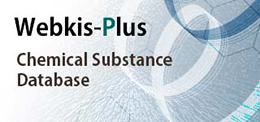 in Japanese
in JapaneseChemical Substance Database (Webkis-Plus)
Get comprehensive information on chemical substances by extensive search functions
Webkis-Plus is a website providing comprehensive information relating to environmental risk management. This site contains information on physicochemical properties; regulations (related mainly to environmental pollution); environmental concentrations from surveys; volumes of substances manufactured, imported, or both; volumes of agricultural chemicals shipped to each prefecture; Pollutant Release and Transfer Register (PRTR) emissions and transportation amounts; risk assessment results; and so on. https://www.nies.go.jp/kisplus/ (in Japanese)
https://www.nies.go.jp/kisplus/ (in Japanese)
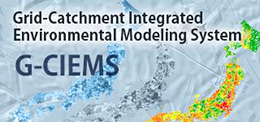 in Japanese
in JapaneseGrid-Catchment Integrated Environmental Modeling System (G-CIEMS)
Simulates the environmental fate of contaminants throughout Japan
G-CIEMS is a spatially resolved and geo-referenced, dynamic, multimedia environmental fate model. This model predicts the concentrations of chemicals in the atmosphere, surface waters, surface water sediments, surface soils, coastal waters, and sewage collection areas based on environmental emissions and physicochemical properties of the target substances and use of geographical and meteorological information. https://www.nies.go.jp/rcer_expoass/gciems/gciems.html (in Japanese)
https://www.nies.go.jp/rcer_expoass/gciems/gciems.html (in Japanese)
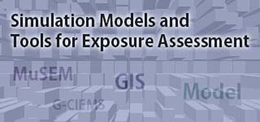 in Japanese
in JapaneseSimulation Models and Tools for Exposure Assessment
Get models and tools for simulating environmental fates and visualizing geographic data
This website provides the following models and tools: G-CIEMS; the Multimedia Simplebox-systems Environmental Model (MuSEM), which is an integrated tool for assessing environmental risk; and a tool for visualizing geographic data containing simulation results obtained by G-CIEMS, and so on. https://www.nies.go.jp/rcer_expoass/index.html (in Japanese)
https://www.nies.go.jp/rcer_expoass/index.html (in Japanese)
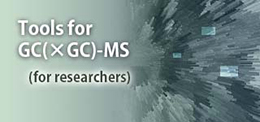 in Japanese & English
in Japanese & EnglishTools for GC(×GC)-MS
A collection of programs designed for accurate mass spectrometry data analysis (for researchers)
This page provides original software to analyze data from a gas chromatograph-mass spectrometer (GC-MS) or a comprehensive two-dimensional gas chromatograph (GC×GC)-MS. A GC×GC is an instrument that can separate dozens of times more components than a conventional GC, allowing simultaneous separation of many kinds of chemicals. In addition, the high-resolution time-of-flight mass spectrometer (HRToFMS) is capable of extremely fast, accurate mass analysis. The combination of these instruments contributes to research on environmental pollution caused by a wide and complex variety of chemicals. https://www.nies.go.jp/risk_health/analysis/gcgcms.html (in Japanese & English)
https://www.nies.go.jp/risk_health/analysis/gcgcms.html (in Japanese & English)
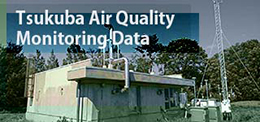 in Japanese
in JapaneseTsukuba Air Quality Monitoring Data
Real-time PM2.5 and other air quality concentrations are reported.
As a part of quality control of the measurements, continuous air quality monitoring has been conducted at the Atmospheric Measurement and Experiment Laboratory (Air Quality Research Station) of NIES since 1978. The measurement results since 1995 are available on our website, and more detailed information and data can be provided upon request. https://www.nies.go.jp/aqrs/index.html (in Japanese)
https://www.nies.go.jp/aqrs/index.html (in Japanese)
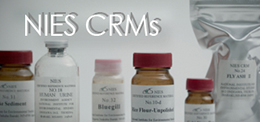
NIES CRMs
Environmental Certified Reference Materials (CRMs) are utilized to evaluate new analytical methods and to control the accuracy of pretreatment and instrumental analyses.
National Institute for Environmental Studies (NIES) have been preparing and distributing environmental and biological CRMs since 1980.
At present, 17 CRMs are available (including 1 CRM which cannot be sent overseas). https://www.nies.go.jp/labo/crm-e/index.html
https://www.nies.go.jp/labo/crm-e/index.html
